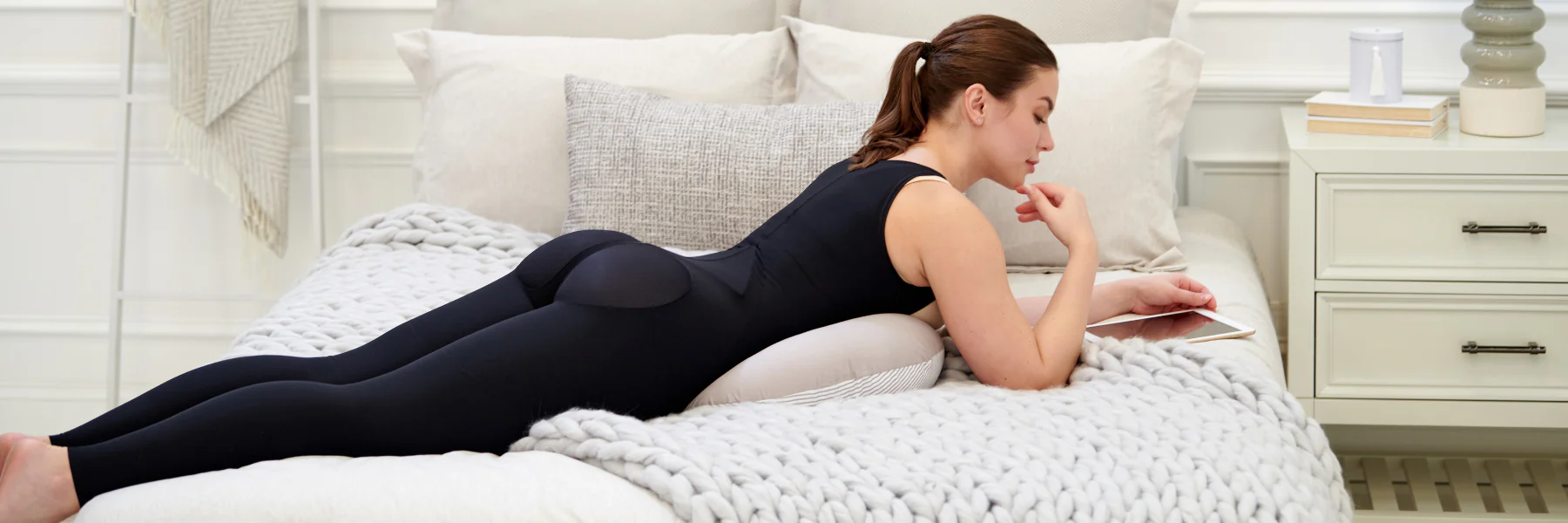
After a Brazilian Butt Lift (BBL), your fat grafts are vulnerable. Sitting compresses them. That pressure reduces blood flow. Without oxygen, grafted fat cells may die. Doctors recommend avoiding direct sitting entirely. Instead, use special pillows. Or lie on your stomach. Two weeks is a standard minimum. Some surgeons extend it to three.
Fat cells need a steady blood supply to survive after transfer
The fat comes from your own body. It’s liposuctioned from areas like the abdomen or flanks. Then it’s purified and injected into the buttocks. But once transplanted, the fat cells need to “catch” in place. Blood vessels must reconnect. If compressed, this process fails. Less oxygen means less survival.
Special BBL pillows shift weight to the thighs, not the buttocks
These aren’t regular cushions. BBL pillows are shaped to elevate your hips. They redirect weight toward your thighs. This leaves your butt free of pressure. It allows you to sit for short periods. Always on a firm surface. Soft couches may sink too much. Consistency matters.
Lying on your back can damage results just as much as sitting
Many forget this part. Reclining or resting flat also compresses the butt. Patients are advised to sleep on their stomach. Or sometimes their side, with support. It’s uncomfortable at first. But the grafts need protection 24/7 during early healing. Even accidental pressure can affect outcome.
Driving should be avoided entirely for the first few weeks unless medically necessary
Cars aren’t designed for recovery. The seat angles force weight onto the glutes. Even with a pillow, driving is risky. Emergency stops tighten muscles. Long rides reduce circulation. Most surgeons recommend no driving for 2–3 weeks. Arrange transport or work from home if possible.
Walking is encouraged early to promote circulation and reduce clot risks
You’re not meant to stay still entirely. Movement helps recovery. Gentle walking improves blood flow. It lowers the chance of clots forming in the legs. It also aids lymphatic drainage. But standing too long can strain the lower back. Balance is key.
Swelling and bruising can make sitting feel uncomfortable even after the initial restriction period
Even when allowed, sitting may still hurt. The tissue remains inflamed. Bruises feel tender. Fatigue may follow brief sitting. Your body tells you what’s safe. Forcing it too soon risks complications. Use cushions. Sit upright. Avoid slouching or twisting.
After three weeks, most patients gradually return to seated positions—but not for extended periods
It’s not a switch. Sitting returns slowly. Fifteen minutes. Then thirty. Build tolerance carefully. You may alternate between standing and sitting. Many use standing desks during transition. Your surgeon will guide the pace. Individual healing varies.
By six to eight weeks, unrestricted sitting becomes possible for many patients
At this stage, grafted fat is more stable. Blood vessels have likely reconnected. You still want to be mindful. Long flights or movie marathons aren’t wise yet. But daily seated work becomes manageable. Always follow surgeon clearance. Some allow earlier return based on progress.
Too much pressure too soon can lead to fat reabsorption or asymmetry
This is the biggest risk. Pressure crushes new fat. That fat dies and disappears. You may lose volume. Or one side deflates more than the other. Corrections become difficult. A second surgery may follow. Protect your investment by following instructions.
Lymphatic massage improves healing and reduces fluid retention, but doesn’t replace fat survival care
Some patients get lymphatic massage. It reduces swelling. It softens firm areas. But it doesn’t make sitting safe earlier. Grafted fat still needs time. Massage is part of recovery—not a shortcut. Schedule sessions professionally. Untrained pressure can harm results.
Compression garments should be worn, but must not apply direct pressure on grafted areas
After liposuction, compression helps shape the body. It prevents fluid buildup. But garments must spare the buttocks. Special BBL fajas do this. They compress the waist, thighs, and abdomen—but not the glutes. Incorrect garments ruin results. Always confirm fit with your provider.
Some of the transferred fat will naturally be reabsorbed, even with perfect sitting precautions
Not all fat survives. That’s normal. Usually, 60%–80% of the fat remains. The rest dissolves gradually. That’s why surgeons overfill slightly. Final results appear around 3–6 months. Sitting safely helps protect that percentage. But even the most careful patients see slight volume loss.
Physical activity must be limited until the surgeon clears movement beyond walking
Squats, lunges, and gym sessions pressurize the area. They burn calories rapidly. That can also affect fat retention. Most patients avoid exercise for 6–8 weeks. After that, light cardio returns first. Then strength training. Rushing back reduces results. Patience equals payoff.
Wearing jeans or tight clothing too soon can distort the shape or cause indentations
Soft, breathable clothing is ideal post-op. Compression garments are worn underneath. But tight pants press into healing tissue. That creates creases. Or shifts fat away from the ideal location. Loose dresses or leggings are safer. At least for the first month.
Daily routines like using the toilet or dressing must be adjusted to avoid strain
Every movement affects recovery. Sitting to dress may press too hard. Toileting becomes tricky. Some use toilet risers or support bars. Planning ahead helps. Keep items within reach. Ask for help when needed. Minor habits matter during healing.
BBL results take months to settle—and sitting habits influence every stage
Early results change. Swelling masks shape. Gradual fat loss reveals contours. Sitting wrong distorts that contour. Some curves disappear. Others flatten. Every patient’s timeline differs. But most reach final shape between 4–6 months. Sitting remains part of that equation.
Source: Butt Lift in Dubai / Butt Lift in Abu Dhabi
